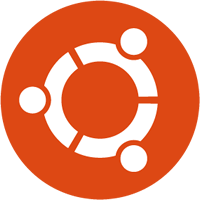Why Infrastructure as Code (IaC) is the Future of Managing Modern Systems
As technology evolves at an unprecedented pace, organizations are constantly seeking ways to build, manage, and scale their infrastructure with efficiency and reliability. Enter Infrastructure as Code (IaC), a revolutionary approach to infrastructure management that has rapidly gained traction in modern IT environments. IaC has become the cornerstone of modern system management, enabling teams to automate, version, and scale their infrastructure with ease. But why is IaC the future? Let’s delve into the details.
What is Infrastructure as Code (IaC)?
At its core, Infrastructure as Code is the practice of managing and provisioning infrastructure using machine-readable configuration files rather than physical hardware configuration or interactive configuration tools. IaC treats infrastructure the same way developers treat application code, enabling organizations to:
- Automate the provisioning of resources.
- Version control configurations.
- Standardize deployments across environments.
Popular IaC tools include Terraform, Ansible, CloudFormation, and Pulumi, each catering to specific needs and preferences.
The Benefits of IaC
1. Consistency and Standardization
Manually configuring infrastructure often leads to inconsistencies across environments. IaC eliminates this by ensuring that the same configuration file is used to provision every environment. This reduces the likelihood of “works-on-my-machine” issues and ensures that development, staging, and production environments are identical.
2. Automation and Speed
With IaC, infrastructure provisioning becomes a quick and automated process. Tasks that once took days or weeks can now be completed in minutes. For example:
- Spinning up a multi-region Kubernetes cluster can be achieved with a single command.
- Scaling infrastructure during high traffic periods can be automated based on predefined thresholds.
3. Version Control and Collaboration
IaC configurations are stored as code, enabling teams to use version control systems like Git. This provides several advantages:
- Change tracking: Know who made changes, what changes were made, and when.
- Rollback capability: Easily revert to a previous configuration in case of issues.
- Collaboration: Multiple team members can work on infrastructure changes concurrently, leveraging branching and pull requests.
4. Cost Efficiency
IaC tools can optimize resource usage by automating the de-provisioning of unused infrastructure. For example:
- Development environments can be automatically terminated outside business hours.
- Resources can be scaled down during periods of low demand, saving costs.
5. Improved Security
IaC promotes secure infrastructure management by allowing security configurations to be embedded directly in the code. This ensures that security policies, such as access control rules, encryption settings, and network configurations, are consistently applied across environments.
6. Disaster Recovery and Resilience
With IaC, organizations can quickly rebuild infrastructure in the event of a failure. By maintaining up-to-date configuration files, entire systems can be restored with minimal downtime. This is especially critical for disaster recovery and business continuity.
Why IaC is Essential in Modern Systems
1. Cloud-Native Ecosystems
The shift to cloud computing has transformed how infrastructure is managed. Cloud providers like AWS, Azure, and Google Cloud offer dynamic, scalable resources that can be provisioned programmatically. IaC is the glue that binds these resources together, enabling:
- Dynamic scaling of cloud resources.
- Automated multi-cloud deployments.
- Integration with cloud-native tools like Kubernetes and Docker.
2. Microservices Architectures
In a world dominated by microservices, managing infrastructure manually is no longer feasible. IaC enables the orchestration of complex, interdependent services across multiple environments. This is particularly useful for:
- Defining infrastructure for containerized applications.
- Managing service meshes and networking configurations.
- Ensuring consistency across multiple microservices.
3. DevOps and Agile Practices
IaC is a fundamental pillar of DevOps and Agile methodologies. By integrating infrastructure management into the CI/CD pipeline, IaC allows organizations to:
- Deliver infrastructure changes as part of regular software updates.
- Perform automated testing of infrastructure configurations.
- Accelerate release cycles without compromising stability.
Challenges of Implementing IaC
While IaC offers numerous benefits, adopting it comes with its own set of challenges:
1. Learning Curve
Teams must invest time and resources to learn IaC tools and best practices. This includes understanding syntax, troubleshooting, and integrating IaC into existing workflows.
2. Tool Selection
With numerous IaC tools available, choosing the right one can be daunting. Factors like cloud provider compatibility, team expertise, and project requirements must be considered.
3. Governance and Compliance
Managing large-scale IaC deployments requires robust governance policies to ensure compliance with organizational standards and regulatory requirements.
4. State Management
IaC tools often maintain a “state file” to track infrastructure resources. Managing this state file securely and ensuring its accuracy can be a challenge in collaborative environments.
Best Practices for Using IaC
To maximize the benefits of IaC, organizations should adopt the following best practices:
1. Use Modular Configurations
Break down IaC configurations into reusable modules. This simplifies maintenance and encourages consistency across projects.
2. Implement Version Control
Store all IaC configurations in a version control system. Use branching and pull requests to manage changes.
3. Integrate with CI/CD Pipelines
Incorporate IaC into your CI/CD pipelines to automate testing and deployment of infrastructure changes.
4. Adopt Testing Frameworks
Use tools like Terratest or InSpec to validate IaC configurations before applying them to production environments.
5. Secure Secrets
Avoid hardcoding sensitive information in IaC files. Instead, use secrets management tools like HashiCorp Vault or AWS Secrets Manager.
6. Document Everything
Provide clear documentation for your IaC configurations to help team members understand and manage them effectively.
Future Trends in IaC
1. AI-Driven IaC
Artificial intelligence is poised to enhance IaC by automating configuration optimization, detecting potential issues, and generating infrastructure templates.
2. Policy-as-Code Integration
As organizations prioritize governance, integrating policy-as-code tools like OPA (Open Policy Agent) with IaC will ensure compliance at every step.
3. Serverless Infrastructure
IaC is evolving to support serverless architectures, enabling teams to manage functions and APIs programmatically.
4. Edge Computing
With the rise of edge computing, IaC will play a crucial role in managing distributed edge nodes and ensuring seamless connectivity.
Conclusion
Infrastructure as Code (IaC) is more than just a toolset; it’s a paradigm shift in how we manage modern systems. By automating, standardizing, and securing infrastructure, IaC empowers organizations to innovate faster, reduce costs, and enhance reliability. While the adoption journey may present challenges, the long-term benefits far outweigh the initial investment. As cloud-native ecosystems, DevOps practices, and microservices architectures continue to evolve, IaC will remain at the forefront of modern infrastructure management.
If your organization hasn’t embraced IaC yet, now is the time to take the plunge. The future of efficient, scalable, and reliable infrastructure management depends on it.






